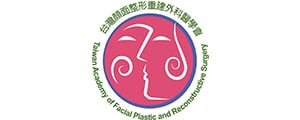Objectives: The objective of this study is to evaluate common complications associated with the use of silicone implants in rhinoplasty and to explore effective preventive strategies and solutions for managing these issues. Given the increasing global popularity of rhinoplasty and the frequent use of silicone implants, understanding the etiology and management of complications such as infection, extrusion, displacement, and aesthetic dissatisfaction is critical for improving patient outcomes.
Introduction: Silicone implants are widely used in rhinoplasty due to their cost-effectiveness, ease of shaping, and availability. However, they are associated with complications such as infection, extrusion, capsular contracture, and displacement, especially in revision cases or long-term use. Prevention requires careful patient selection, proper implant sizing, and meticulous surgical techniques. Early management of complications, such as antibiotics for infection or implant removal for severe cases, is critical.
Materials / method: This study utilized a systematic review combined with a retrospective review of medical records from rhinoplasty procedures performed at Ramathibodi Hospital. These approaches were employed to provide a comprehensive and systematic analysis of complications related to silicone implants and their management strategies.
Results: The review and medical record analysis identified infection, extrusion, capsular contracture, and implant displacement as common complications in silicone implant rhinoplasty. Key factors included improper implant sizing, poor surgical techniques, and patient-specific risks like thin skin or revision history. Preventive measures such as careful patient selection, implant sterilization, and precise surgical methods significantly reduced risks. Early management with antibiotics, implant removal, or autologous tissue replacement effectively restored function and aesthetics.
Conclusion: Silicone implants remain a widely used material in rhinoplasty due to their accessibility and ease of use, but their potential for complications requires careful consideration. Effective prevention strategies, such as proper patient selection and surgical precision, are key to minimizing risks. For managing complications, timely diagnosis and appropriate intervention are critical in achieving satisfactory outcomes. Future advancements should focus on improving implant materials and refining surgical techniques to enhance safety and long-term success in nasal augmentation.
Декларация COI
Получили ли вы финансовую поддержку для поисков этой ТЕМЫ?
Нет
Были ли вам предоставлены гонорары, выплаты или иная компенсация за вашу работу в этом исследовании?
Нет
Есть ли у Вас финансовые отношения с лицами, тесно конкурирующими с препаратами, изделиями или приборами, указанными в вашей презентации?
Нет
Вы владеете или подали заявку на какие-либо патенты по инструментам, лекарствам или материалам для вашего исследования?
Нет
Эта работа не была поддержана никаким прямым или не прямым финансированием. Находится под собственной ответственностью автора.
















